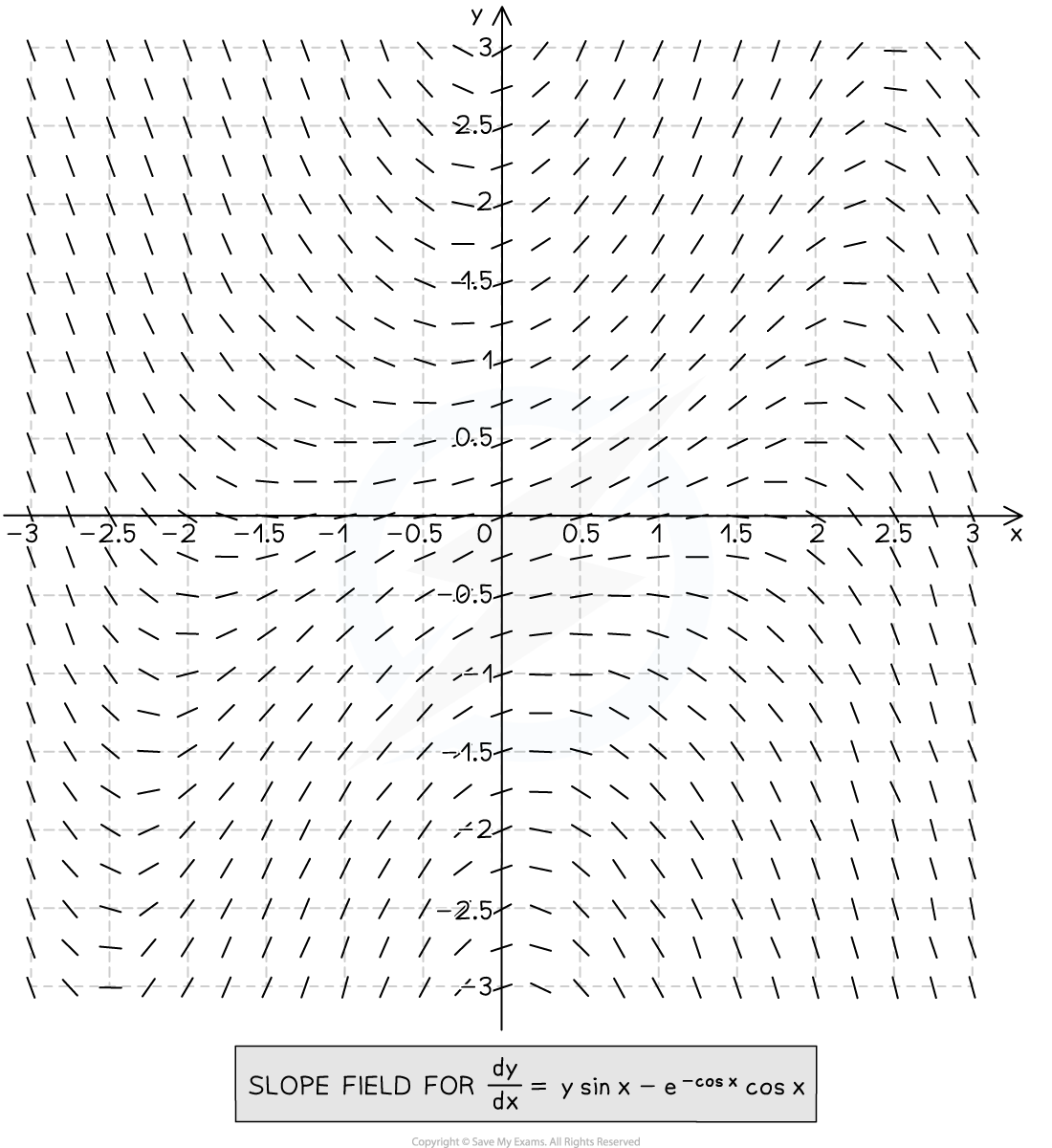Slope Fields (DP IB Applications & Interpretation (AI)): Revision Note
Did this video help you?
Slope fields
What are slope fields?
Slope fields are used to visualise the solutions to a different equation
They can be drawn without knowing the actual solutions
Consider the differentiation equation
You can find the value of
at various points
Just substitute values for
and
into
Each value is the gradient of a solution curve that goes through that point
A slope field for a differential equation is a diagram with short tangent lines drawn at a number of points
Normally the tangent lines will be drawn for points that form a regularly-spaced grid of x and y values

How can I use slope fields to study the solutions of a differential equation?
The tangent lines in a slope field diagram give you a general sense for what the solution curves to the differential equation will look like
Remember that the solution to a given differential equation is actually a family of solutions
We need appropriate boundary conditions or initial conditions to determine which of that family of solutions is the precise solution in a particular situation
You can think of the tangent lines in a slope diagram as flow lines
From a given point the solution curve through that point will flow away from the point in the direction of the tangent line
How can I use slope fields to sketch a solution to a differential equation?
You will be given a point that lies on the solution curve
Plot this point
Use the tangent line at that point to determine the direction of the solution curve
You can go to the right and to the left
Keep using the tangent lines to sketch the shape of the solution
You will only be expected to sketch the solution and not draw it accurately
The shape of the solution curve depends on the given point
Different points lead to different shapes
Examiner Tips and Tricks
Do not be tempted to simply join up the tangent lines. They are not guaranteed to lie on your solution curve. Also, you can cross tangent lines, they are not boundaries for your curve. See the examples below.



What key features can be found using slope field diagrams?
You can find the location of stationary points
These occur at horizontal tangent lines
These could be local minimums, local maximums or points of inflection
You can find the exact points where stationary points lie by solving
For example, consider if
when
Stationary points lie on the lines
Examiner Tips and Tricks
If your given slope field diagram does not have any horizontal tangent lines, then make sure you solve . In the exam, you get marks for having the stationary point(s) lying on the correct line(s).
Worked Example
Consider the differential equation
.
a) Using the equation, determine the set of points for which the solutions to the differential equation will have horizontal tangents.
Answer:

The diagram below shows the slope field for the differential equation, for and
.

b) Sketch the solution curve for the solution to the differential equation that passes through the point .
Answer:


Unlock more, it's free!
Did this page help you?